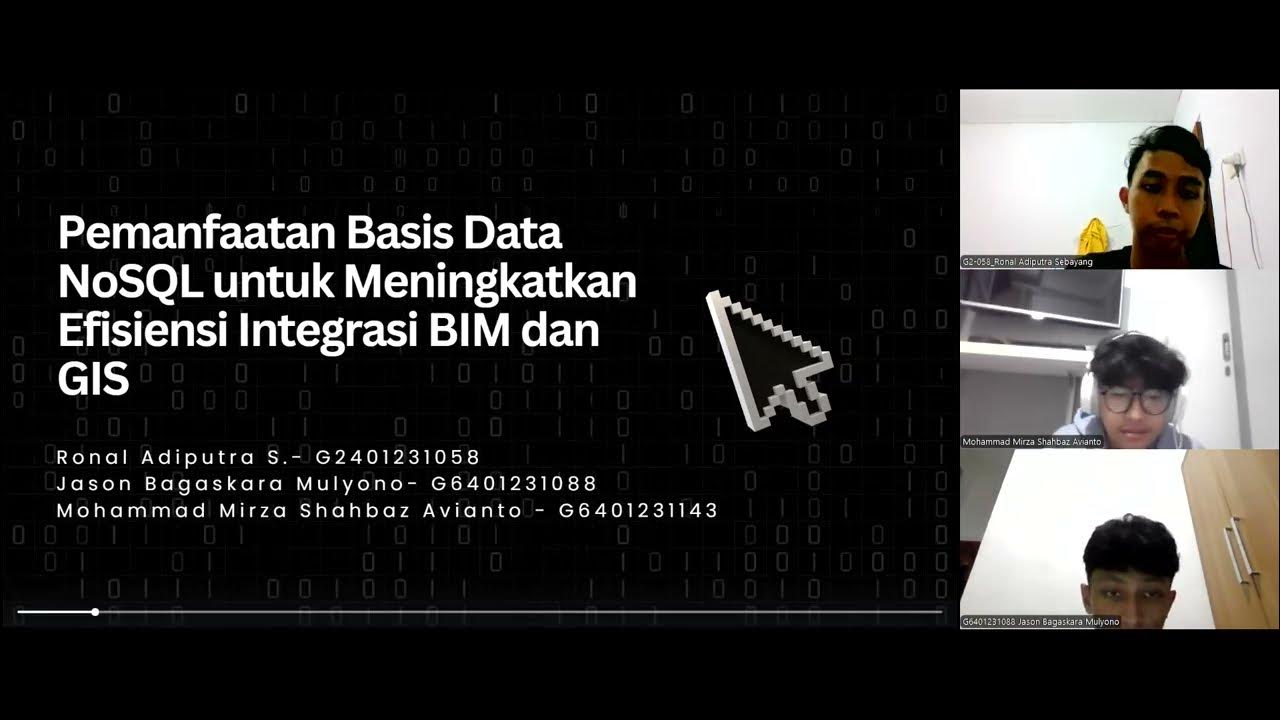01 - Desvendando o Redis: Guia Completo para Iniciantes
Summary
TLDRThis course provides an in-depth introduction to Redis, a high-performance, in-memory database used for caching, messaging, and real-time data storage. It covers key concepts such as Redis's fast data access, supported data types (like strings, hashes, lists, and sets), and practical use cases. The tutorial includes essential Redis commands for data management, like setting, getting, incrementing, and deleting keys. It also demonstrates setting up Redis on various platforms, working with Redis Streams, and troubleshooting common issues such as case sensitivity in keys. Overall, the course is designed to give a solid understanding of Redis and its versatile applications in development.
Takeaways
- 😀 Redis is an in-memory database often used for caching, offering fast data access and supporting various data types like strings, hashes, lists, and sorted sets.
- 😀 Redis supports advanced features like persistence, transactions, pub/sub, and atomic operations on complex data structures.
- 😀 Common use cases for Redis include caching, message queues, session storage, and real-time data analysis.
- 😀 Redis can be used across multiple programming languages including Java, Python, Node.js, and .NET, making it highly versatile.
- 😀 Caching in Redis improves system performance by storing frequently accessed data in memory rather than accessing slower sources like databases.
- 😀 Redis is also great for managing session data, keeping track of user interactions like logins, and expiring sessions after a period of inactivity.
- 😀 Redis supports messaging queues, enabling asynchronous communication between systems for scalable and decoupled architectures.
- 😀 Redis offers a range of data types such as lists, sets, and hashes, which are useful for organizing and processing different types of data.
- 😀 Redis provides essential commands for interacting with data, such as `SET`, `GET`, `DEL`, and `INCR`, making it easy to store and manipulate values.
- 😀 The Redis interface and tools like RedisInsight allow for easy database management and monitoring, supporting different operating systems and integrations.
Q & A
What is Redis and how is it used?
-Redis is an in-memory database primarily used for caching. It stores data as key-value pairs and supports various data types such as strings, hashes, lists, sets, sorted sets, and others. Redis is known for its speed, offering microsecond response times and is widely used for tasks like caching, session storage, and real-time data analysis.
What are some common use cases for Redis?
-Some common use cases for Redis include caching frequently accessed data to improve performance, controlling user sessions (e.g., managing login states), message queues for asynchronous communication between systems, and real-time data analysis.
How does Redis improve system performance?
-Redis improves system performance by storing frequently accessed data in memory, reducing the need to access slower storage systems like databases. This allows faster data retrieval and enhances the overall efficiency of systems, especially in high-demand environments.
What is the significance of Redis being a key-value store?
-Being a key-value store means Redis stores data as pairs, where a unique key identifies a value. This simple yet efficient structure allows for quick lookups, and Redis supports a variety of complex data types as values, making it versatile for different use cases.
What data structures does Redis support?
-Redis supports several data structures, including strings, hashes, lists, sets (unordered collections), sorted sets (ordered collections), streams, bitmaps, hyperloglogs, and geospatial data structures. These structures allow Redis to handle a wide variety of data storage and retrieval needs.
How does Redis handle persistence of data?
-By default, Redis stores data in memory for fast access. However, it offers options for persistence, allowing data to be saved to disk to ensure durability. Redis supports different persistence methods, including snapshotting (RDB) and append-only files (AOF).
What is the role of Redis in message queuing?
-Redis is widely used for message queuing because of its support for pub/sub (publish/subscribe) messaging patterns. It allows for efficient, decoupled communication between systems, enabling asynchronous message passing between producers and consumers.
What are some advanced Redis features?
-Redis provides advanced features such as transactions, pub/sub messaging, and atomic operations on complex data structures. These features enhance Redis's capabilities for handling more complex use cases and ensuring consistency and reliability in distributed systems.
What is the 'expire' command in Redis?
-The 'expire' command in Redis sets a time-to-live (TTL) for a key, meaning the key will automatically be deleted after the specified duration. This is useful for time-sensitive data, such as session tokens or temporary caching.
How do you access and use Redis in a development environment?
-You can access Redis through various tools such as Redis Insight, CLI (command-line interface), or via programming languages like Python, Java, Node.js, and .NET using Redis client libraries. The Redis Labs platform also offers cloud-based Redis services, allowing easy setup and management of Redis instances.
Outlines

このセクションは有料ユーザー限定です。 アクセスするには、アップグレードをお願いします。
今すぐアップグレードMindmap

このセクションは有料ユーザー限定です。 アクセスするには、アップグレードをお願いします。
今すぐアップグレードKeywords

このセクションは有料ユーザー限定です。 アクセスするには、アップグレードをお願いします。
今すぐアップグレードHighlights

このセクションは有料ユーザー限定です。 アクセスするには、アップグレードをお願いします。
今すぐアップグレードTranscripts

このセクションは有料ユーザー限定です。 アクセスするには、アップグレードをお願いします。
今すぐアップグレード関連動画をさらに表示

O que é o Redis? E como utilizá-lo como cache?

Belajar Redis - 2 Kapan Butuh Redis?

Complete Guide on Nest JS Caching | Redis

Redis Tutorial for Beginners #1 - What is Redis?

How does Caching on the Backend work? (System Design Fundamentals)

Pemanfaatan Basis Data NoSQL untuk Meningkatkan Efisiensi Integrasi BIM dan GIS
5.0 / 5 (0 votes)
